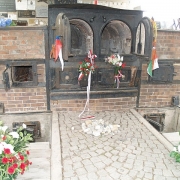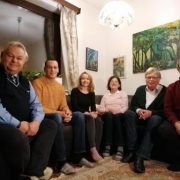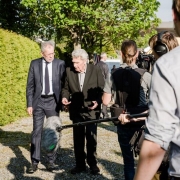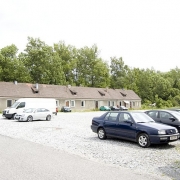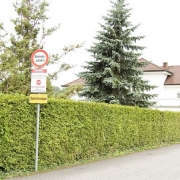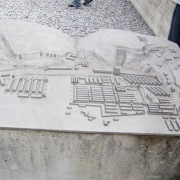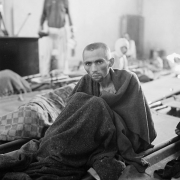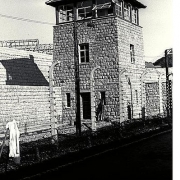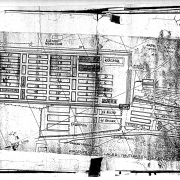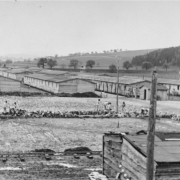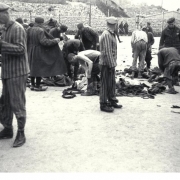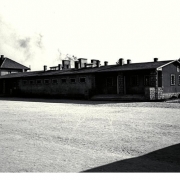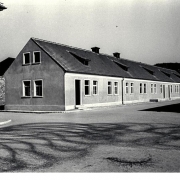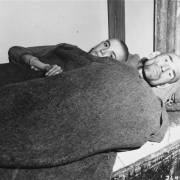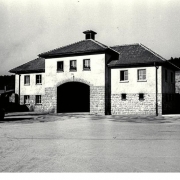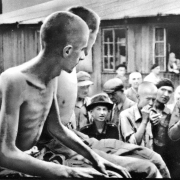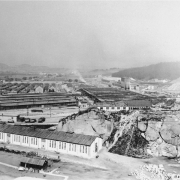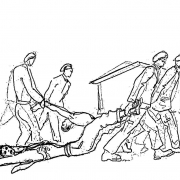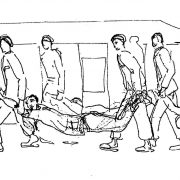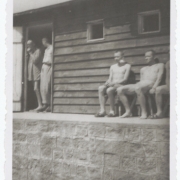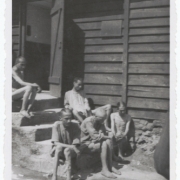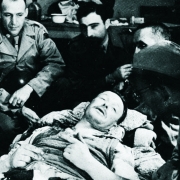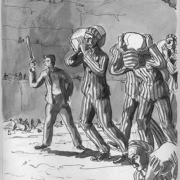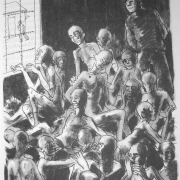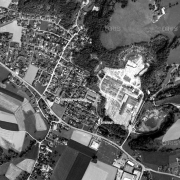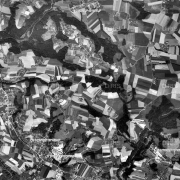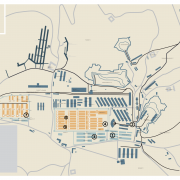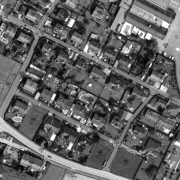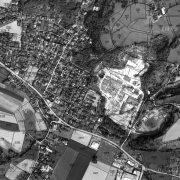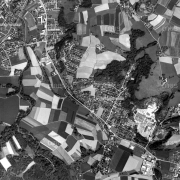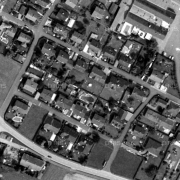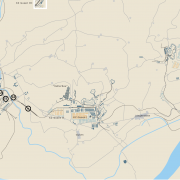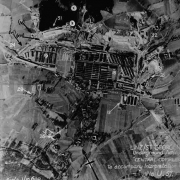Concentration camp Gusen I
Establishment of the satellite camp
It was only a few days after the occupation of Austria by German troops in March 1938 that SS Reich Chief Heinrich Himmler and SS Obergruppenführer and general of the Waffen-SS Oswald Pohl travelled to Mauthausen and Gusen to check the quarries there for their suitability for establishing the two concentration camps there. On 29 April 1938, the DEST (Deutsche Erd- und Steinwerke GmbH; German Earth and Stone Works GmbH) was founded, which would play an important role for the market of St. Georgen later on. Based on this company, numerous concentration camps were established throughout the Reich. The labour group in St. Georgen was one of the most important ones for the DEST. On 8 August, the first prisoners and their guards arrived in Mauthausen to set up the basic infrastructure. It was in December 1939 at the latest that the construction of Gusen I camp started. At first, the prisoners were forced to walk the distance between Mauthausen and Gusen and back every day. In the following March, prisoners from Poland, Germany, and Austria made up the first group of people that were permanently interned at Gusen I (approx. 800 men). In early 1941, the number of prisoners was approximately 4,000.
Location
Gusen I Concentration Camp was very centrally located, directly on the main transport route from Linz and Vienna, nestled between the villages of St. Georgen and Langenstein, and in close proximity to Mauthausen Concentration Camp. The two camps were about five kilometres apart. Then Gau capital (District capital) Linz was also only about 15 kilometres away. The Danube, too, was close, and St. Georgen had rail access to the network of the German Reichsbahn.
Prisoners
In April 1940, the first prisoners were interned at Gusen Concentration Camp. The highest number of prisoners at the concentration camp was about 12,000. A total of about 70,000 prisoners were held captive at the Gusen I, II, and III, and about half of them were murdered. As early as 1941, the number of prisoners at Gusen exceeded that of Mauthausen.
The majority of the prisoners were men. There is only very little information about female prisoners in Gusen. Officially, the only evidence is the brothel in Gusen, where women from Ravensbrück Concentration Camp were forced to work. The prisoners of Gusen Concentration Camp came from all over the world; there were, for instance, even prisoners from China. The majority of the prisoners, however, were from Poland, Spain, France, and Russia. Most of the prisoners had to wear a red triangle-shaped badge (political prisoners) or a black one (asocial and work-shy elements, i.e. gypsies etc.) - badges made from fabric to identify the reason for imprisonment.
Forced labor
While at first, prisoners were mainly forced to work on setting up the camp and to work in the quarries, as of 1942, they were increasingly used to work in the arms industry. From 1943 onwards, the quarry huts in Gusen were converted into a production centre of the Steyr-Werke. In late 1943, the prisoners were also forced to dig tunnels to move production underground. Moreover, they had to start building whole fuselages for the fighter airplanes Me 109 of Messerschmidt GmbH. The brothel, where female prisoners were forced to work, must also be mentioned here.
Guarding
Gusen I Concentration Camp was under the control of the Mauthausen concentration camp and thus its commander, Franz Ziereis. The first camp leader of Gusen Concentration Camp was Karl Chmielewski, a notorious hater of the Polish people, who would later also end up as a prisoner in a concentration camp. The second camp leader was Fritz Seidler, who was transferred over from Auschwitz Concentration Camp. Most of the other guards were also Germans provided by the SS. Between May 1940 and January 1944, prisoners were registered in the Gusen subcamps, independently from Mauthausen Concentration Camp.
Liberation
In the night from 2 to 3 May 1945, the SS assigned the Vienna fire police force with the guard of the camp. Gusen I Concentration Camp was liberated on 5 May, although only by one first patrol of US soldiers. The first “real” US troops did not arrive until 7 May. In those two days, Gusen was ruled by chaos and lynch law. When Gusen I, II, and III were liberated, there were approx. 25,000 prisoners held captive there.
Commemoration and remembrance
Large parts of the camp were dismantled as early as the 1950s. A residential area was established on the premises of the former concentration camp. In 1961, concentration camp survivors [1] set up the “Memorial de Gusen” around the preserved crematory of Gusen I Concentration Camp. The initiative Memorial Service Committee Gusen [2] has been working for a “Never again” since 1984, and receives substantial support from survivors of Gusen Concentration Camp, from the Mauthausen Committee Austria, from the Comité International de Mauthausen, and the political municipalities of St. Georgen/Gusen and Langenstein. In 2004, a permanent exhibition opened its doors, about the history of the concentration camp. There are information boards outside the tunnels about the concentration camps and the tunnel excavations. The anniversary of the liberation of Gusen I, II, and III is organised by the Memorial Service Committee Gusen in cooperation with the Mauthausen Committee Austria. The date can be found in the programme for commemoration and liberation ceremonies [3].

